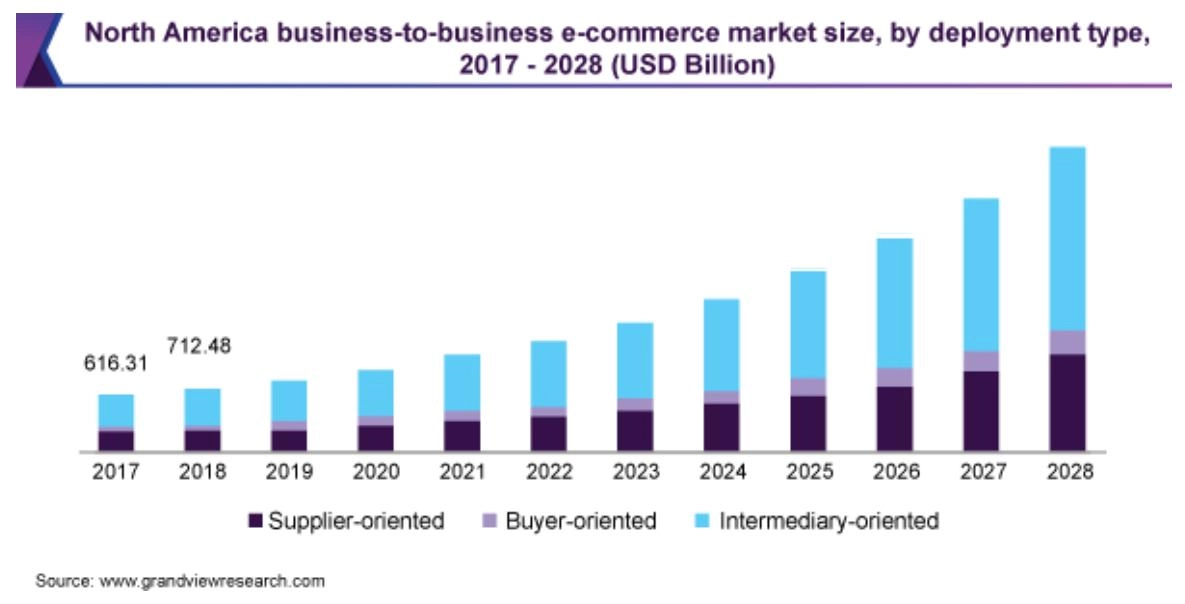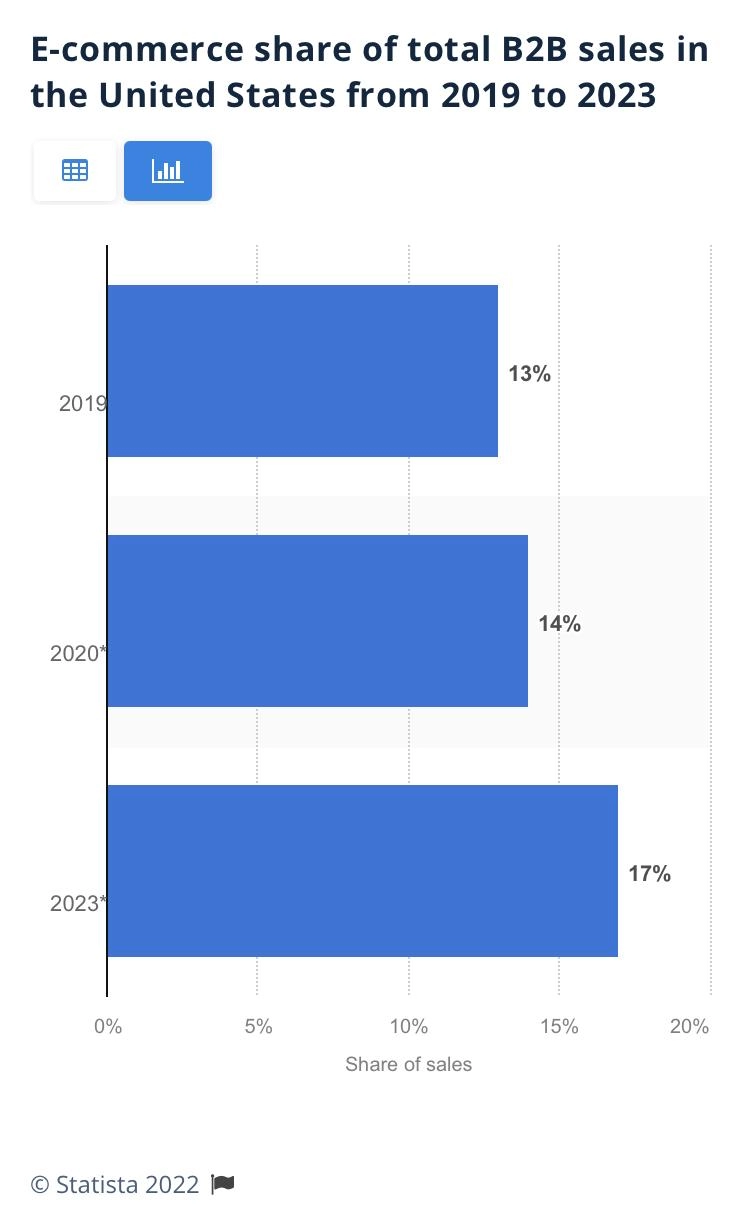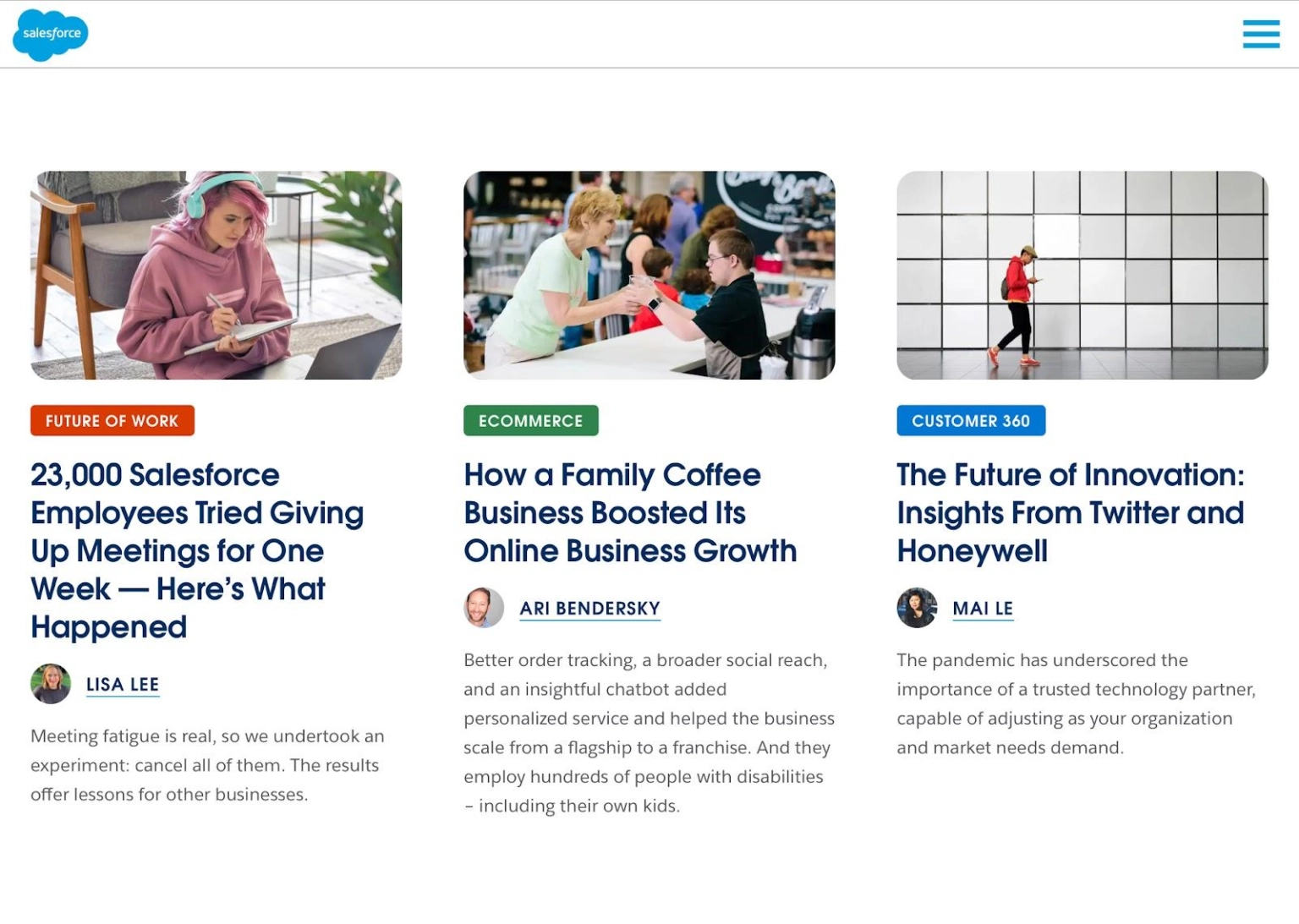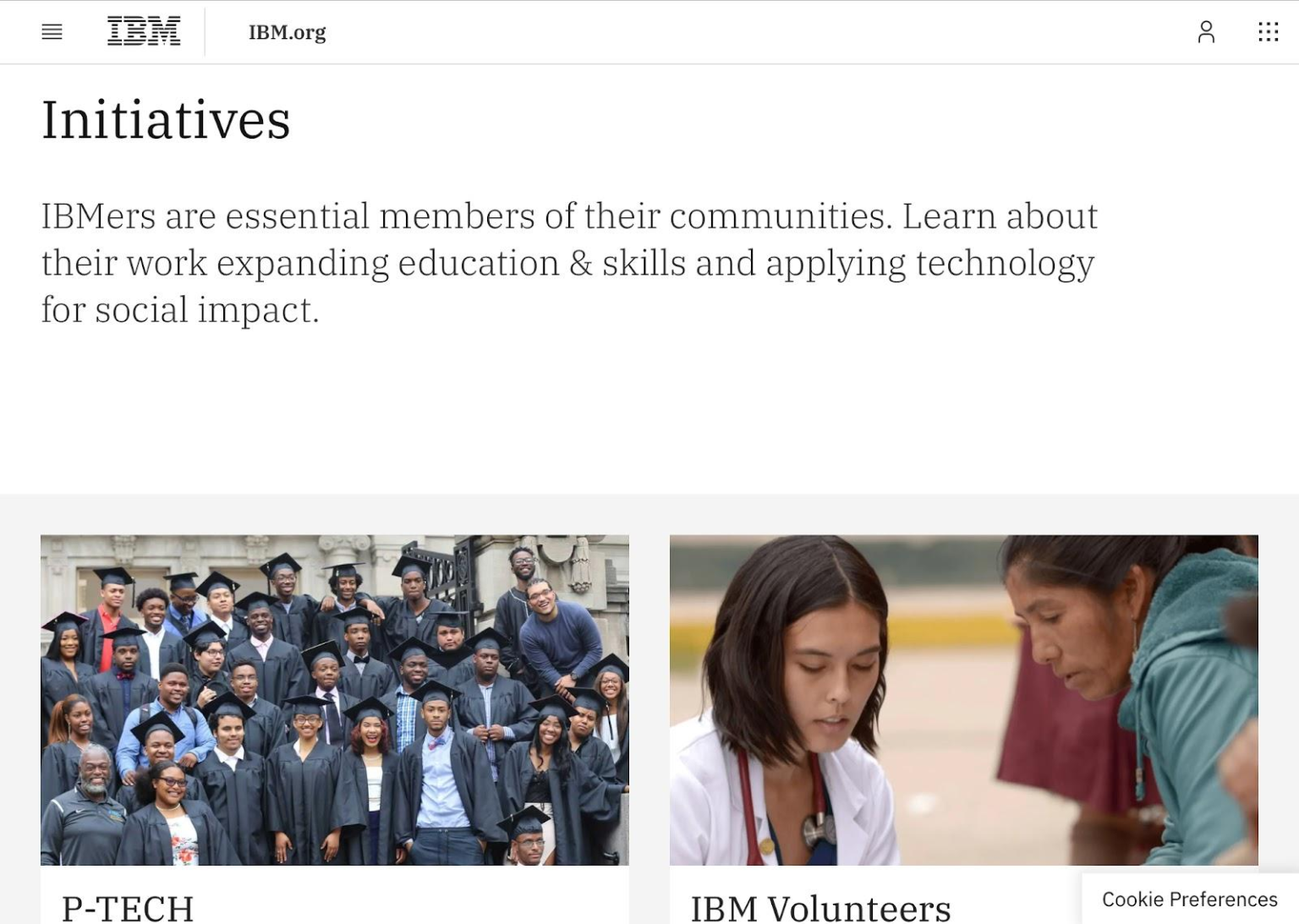
Introduction
With the hope that 2022 will be better than 2021 or 2020, B2B marketers are fully gunned up to rule this year.
But B2B marketers, before ganging up to tackle a new year, you have to watch out for the top 7 B2B marketing predictions made by the industry experts.
That is because the pandemic has changed how business buyers think and make decisions. Most B2B marketers already know that taking marketing online is the only way to grow in the new normal.
It is already projected that B2B eCommerce will grow at 18.7% of CAGR between 2021 to 2028.

Source: GrandViewResearch
Therefore, if you want to boost sales and churn more revenue in 2022, revising your
B2B marketing funnel based on the top predictions is important.
So, without any ado, let’s check out 7 marketing predictions that’ll spook B2B marketers in the coming years.
B2B Marketers Watch Out for Top 7 B2B Marketing Predictions in 2022
B2B marketing has evolved a lot in the last few years. From traditional marketing channels to digital marketing tools, B2B marketing has shaped into a mainstream marketing area like B2C.
In fact, it is anticipated that 17% of B2B sales will come from digital channels by 2023 compared to 14% in 2020.

Source: E-Commerce-Share
There are many similar predictions that are circulating in the market to spook B2B marketers in 2022. Here are the most likely to come true B2B marketing predictions:
Prediction 1. Fragmented Marketing Teams Will Consolidate in 2022
B2B marketing has been part of mainstream digital marketing for years now. According to the 2020 CMO Survey, B2B companies across all industries spend on average 11.3% of their annual revenue on marketing.
But unfortunately, they are not getting the desired results compared to the investment they are making in marketing strategies. The reason?
The simple reason is fragmented B2B marketing teams. It means every B2B company is fighting against one another today.
Regardless of company scale, all B2B marketing teams are equal on the digital realms fighting for search engines and customers’ attention.
Now answer this – Can a startup B2B company compete with a Fortune 500 company by investing in equal amounts of marketing tools and techniques?
Obviously, not!
Therefore, it is predicted that B2B marketing teams will consolidate in 2022 to grow their marketing ROI.
But how will B2B marketing teams consolidate?
Using digital marketing channels, marketers can consolidate or collaborate their marketing campaigns in many ways to drive maximum results within budget. Here are a few examples:
Influencer Marketing
Influencer marketing is a popular consolidated marketing strategy that allows B2B marketers to collaborate with industry influencers. This way, they can drive more views, new users, and traffic from different sources.
Many B2B products and services are interdependent on one another or have the same targeted audience base. These brands can consolidate their marketing efforts to achieve maximum results.
For example, Microsoft (a technology brand) partnered with National Geographic (a travel brand) to form a unique B2B Instagram marketing campaign.

Source: NatGeoTravel
They collaborated with macro and micro photographer influencers to click exquisite landscape photos. Microsoft posted 5 photos on National Geographic’s Instagram account to inspire young women to explore the STEM industry.
This collaborative campaign has been a great hit for Microsoft with 3.5 million likes in a day and reaching out to 91 million people.
Guest Blogging
Sharing your content on third-party websites is the best technique to generate backlinks and traffic. When you collaborate with top websites in your niche, you can rank on new keywords and expose your brand ahead of new users.
Additionally, many high DA websites today offer free guest blogging opportunities like Entrepreneur, Forbes, etc.
Co-hosting Events
Brands can partner with influencers to host informative events. Physical events aren’t possible today in many parts of the world, but you can use webinars or podcasts to host virtual events.
Hosting events will help B2B brands in two ways –
- They can establish a direct connection with potential customers
- They can reach out to new customers through their partners
There are many other options available to harbor consolidated and revenue-driven marketing in 2022. So, don’t forget to include them in your B2B marketing funnel.
Prediction 2. Insightful Data-Drive Marketing Will Conjure in 2022
Personalized marketing isn’t a new term. Marketers have been working to provide personalized marketing experiences to their customers for ages now.
But where is personalization taking B2B marketing?
Nowhere!
According to a Forrester report, 75% of personalized engagement efforts will not meet ROI goals in 2022. The reason?
Inadequate Buyer Data.
B2B marketers are indeed making efforts to create personalized emails and social media campaigns. But since they don’t have adequate buyer’s intent data with them, personalized marketing is not driving any results.
Therefore, it is highly essential for B2B marketers to invest in the right resources and automation products to gather accurate buyer intent data. But, this is not going to be that easy.
Simply because the internet is changing in 2022. Google is about to end cookies, iOS has elevated its security protocols and Facebook is making a new data collection policy.
That means you should also revive your data collection methods to gather accurate buyer intel, such as:
Restructure Your Content
Content is the perfect way to gather real-time data from your potential customers. You have to restructure your content marketing plan this year to gather better data on your customers’ online behavior.
For example, you should publish research papers and ebooks on your website to recognize your potential customers. On the flip side, you can publish relevant blogs on your website to target new audiences and improve your search engine ranking.
Score Your Visitors
The people who download your ebook are more willing to buy from you as compared to those who have just visited your website for the first time.
Like this, you should set scores to rank your visitors based on their interaction with your content. This will provide you with a better overview of your audience and where they stand in the sales funnel.
Segment Your Audience
The number one rule to launch a successful personalized marketing campaign is segmenting your audience properly. If you don’t group your audience in the proper manner, you won’t be able to produce the right content and visuals for your campaign.
Therefore, you should segment your targeted audience based on geographic, demographic, and other factors.
Prediction 3. B2B Customer’s Request – Not Demand Better Customer Experience in 2022
B2B marketers have been gaming up to enhance the customer experience for a while now. But business customers are still not satisfied with B2B marketer’s efforts.
According to a Merkle’s study, 28% of business customers in 2020 and 44% in 2021 have said that they have waited for too long to complete a purchase from B2B suppliers.
And now, in 2022, B2B customers are not requesting marketers to elevate customer experience, they are demanding it.
Therefore, business marketers need to accelerate their customer experience portion. For this, they can steal a few ideas from B2C marketers playbook, such as:
Be Emotional
It’s time to get emotional B2B marketers. You might be selling to a business, but there is still a human who is making a purchase decision. Therefore, use emotions to tap into your customer’s feelings with your marketing campaigns.
Omnichannel Marketing
Today, B2B marketers need to adopt omnichannel marketing strategies. That is because business customers also use different portals like B2C customers to gather relevant information about the brand before making a purchase.
Thus, use all the possible marketing channels to create a seamless customer experience such as social media, guest blogging, email marketing, etc.
Increase Customers Involvement in Marketing Funnel
Yes, the best way to enhance customer experience is to give customers a position in your marketing strategies. When you involve customers in creating your marketing strategies, you can better capture their interest.
For example, you can publish user-generated content on your website or social media channels. This will help you establish a direct connection with customers, understand their needs, and social proof your brand.
Prediction 4. AI will Automate Marketing Operations in 2022
Marketing automation is not a new concept. Already B2B marketers are using marketing tools to track performance, gather data and draw analytical results.
But it is predicted that artificial intelligence will also intervene in marketing automation software in the future. It is projected that B2B companies will use AI to deeply personalize the user experience. In fact, 40% of human touches will be removed from sales and marketing operations with AI by 2026.
Here’s how AI can benefit B2B marketers:
- AI can elevate the level of personalization in marketing. Companies can track and monitor users’ interests better with AI-powered tracking tools to send personalized messages or products or services suggestions.
- Instead of appointing a person to handle customer queries, using AI chatbots will be more cost-effective for companies.
- AI provides deep analytical data over users’ behavior to understand which visitor is likely to more convert into a customer. Deep learning algorithms can show the exact position of a lead in the sales funnel.
- AI-based marketing tools can help B2B companies to design products and services based on real-time user feedback.
- Marketers can run smart digital ad campaigns by targeting the right users based on different segments like age, income, location, gender, etc.
Today, there are a plethora of AI-powered tools available to support marketers, such as:
- Optimal for email marketing
- Grammarly to produce flawless content
- HubSpot SEO to better understand search engines
- Sentient Ascend to run an A/B test on your content marketing strategies
- Copilot to automate communication with customers and many more.
Prediction 5. Marketing will be Tougher in 2022
Marketing will not be simple in the coming years. With more B2B companies adopting aggressive marketing strategies, just running a few ads on Google or occasional social media posts will do you no good.
Also, Facebook has revised its privacy policy, Instagram is more focusing on video content and Google is changing its algorithm that will affect your SEO ranking.
So, B2B marketers need to change their marketing strategies to evolve in this tough environment. They have to adopt the following strategies to toughen up their marketing funnel:
Video Marketing
Video content is what you need to beat tough marketing in 2022. But the standard video marketing will not work anymore. You have to produce video content that can inform, engage and shorten the buyer’s journey.
For instance, making live streaming is a powerful tool to deliver interactive content. According to Forrester, users prefer to watch live 10 to 20 times longer. Thus, you have to invest more in video content to grow in 2022.
Account-Based Marketing
ABM is a robust marketing method that can help B2B companies to streamline marketing and sales operations. Account-based marketing will allow marketers to understand individual customer accounts and run marketing campaigns accordingly.
Using ABM, marketers can identify high-value accounts, run customized marketing campaigns, and measure marketing campaigns results.
Informative Content Marketing
Content marketing is the best B2B marketing strategy to improve search engine ranking and inform users. But in 2022, you have to produce more informative content targeting your audience’s pain points.
For example, look at the Salesforce blog page. They share blogs on recent events and informative topics for business leaders.

Source: SalesForce
They never directly promote their brand via content. They simply provide information to people and let them decide whether to use Salesforce solutions or not.
All in all, B2B marketers have to adopt a more personalized, informative, and visual approach to survive in this tough marketing environment.
Prediction 6. Focus on Retaining Your Marketing Staff in 2022
The pandemic has not only changed the marketing ecosystem or buyer’s behavior. It has also changed internal affairs for companies.
According to a CNBC article, 4.4 million people have quit their jobs as of September 2021. And, there is no sign of stopping in the resignation process.
In this great resignation show, marketing employees are also involved. That means B2B companies have to deal with their best marketing employees quitting in 2022.
This will not only disturb the marketing process but also increase recruitment and training expenses for B2B companies.
Therefore, B2B companies need to focus more on retaining their staff. Here are the few strategies to retain your marketing employees:
- Provide a hybrid work environment. Flexible work arrangement has become highly important for workers today. Thus, allow your marketing employees to work from home or office according to one’s convenience.
- Reward efforts. If your marketing team has achieved their target and brought more leads to the sales funnel, reward their excellent efforts.
- Prioritize your employee well-being. After the COVID-19 outbreak, people have learned the importance of physical and mental health. Therefore, you can provide more sick leaves and free health checkups to retain your people.
- Introducing ESOPs. Employee Stock Ownership Program is a powerful strategy to compensate your employees with bonuses and incentives. By making the employees stakeholders in your company, helps to keep them invested in the company’s performance.
- Sabbatical programs to retain top talent. Sabbatical leaves can last for over six weeks or more that you can provide to your top marketers. Also, you can offer extended maternal and paternal leaves to your staff.
Prediction 7. Brand Value will Impact Buyers in 2022
Brand value is not only important for B2C customers. Business customers also prefer to buy from brands that have a unique brand value. In fact, 71% of consumers prefer to buy from companies that are aligned with their values.
B2B marketers have to develop marketing strategies aligning with their targeted audience’s value. For this, they have to first understand their core users and create brand value accordingly.
For example, IBM has a dedicated initiative page on their website where they provide educational and science-related programs.

Source: Impact
Since the core IBM users are people working in the science or technology field; thus, these social initiatives to boost the caliber of science give a competitive edge to IBM. Additionally, it provides a unique brand value of a science philanthropist to IBM.
What Waits for B2B Marketers in 2022?
B2B marketing will take a full 360-degree turn in 2022. Based on the discussed 7 B2B predictions, B2B marketers have to make many new changes in the prevailing year.
From internal affairs to post-pandemic changes, B2B marketers have to deal with many new normal marketing changes. Therefore, B2B marketing needs to be more consolidated, personalized, and customer-centric in 2022.
It is time for B2B marketers to rework their marketing funnel and come up with a solid plan to rule the marketing realms.
So, now we leave you to prepare your marketing strategies based on the top 7 predictions. Also, do share your thoughts on these B2B marketing predictions.
Our blog
Latest blog posts
Tool and strategies modern teams need to help their companies grow.

B2B companies must generate leads that are ready to buy their products in order to me...

In the absence of a constant flow of leads, sales teams can't meet their targets and ...

Podcasts and webinars are powerful tools that marketers can use to reach new audience...



